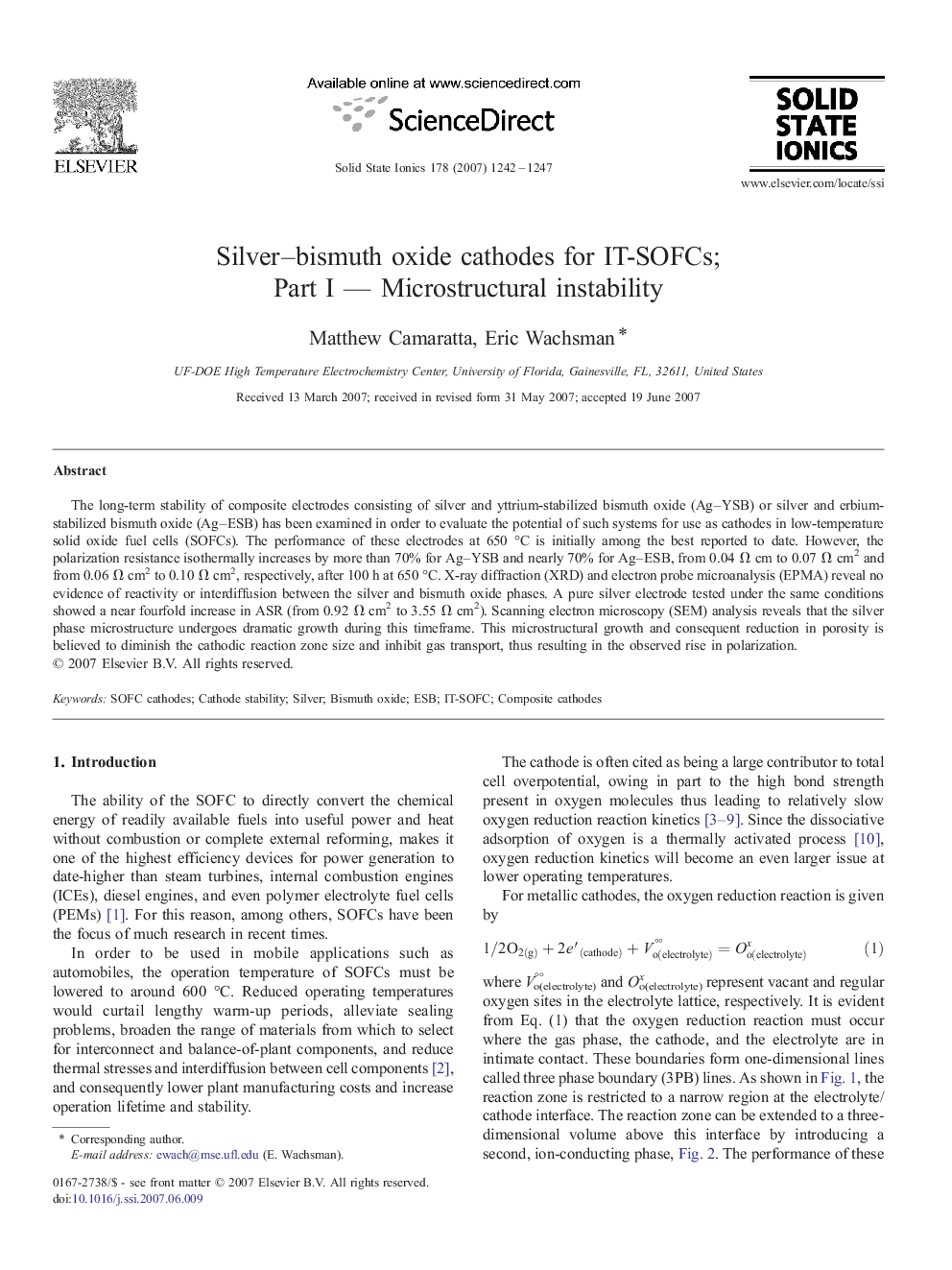| Article ID | Journal | Published Year | Pages | File Type |
|---|---|---|---|---|
| 1298856 | Solid State Ionics | 2007 | 6 Pages |
The long-term stability of composite electrodes consisting of silver and yttrium-stabilized bismuth oxide (Ag–YSB) or silver and erbium-stabilized bismuth oxide (Ag–ESB) has been examined in order to evaluate the potential of such systems for use as cathodes in low-temperature solid oxide fuel cells (SOFCs). The performance of these electrodes at 650 °C is initially among the best reported to date. However, the polarization resistance isothermally increases by more than 70% for Ag–YSB and nearly 70% for Ag–ESB, from 0.04 Ω cm to 0.07 Ω cm2 and from 0.06 Ω cm2 to 0.10 Ω cm2, respectively, after 100 h at 650 °C. X-ray diffraction (XRD) and electron probe microanalysis (EPMA) reveal no evidence of reactivity or interdiffusion between the silver and bismuth oxide phases. A pure silver electrode tested under the same conditions showed a near fourfold increase in ASR (from 0.92 Ω cm2 to 3.55 Ω cm2). Scanning electron microscopy (SEM) analysis reveals that the silver phase microstructure undergoes dramatic growth during this timeframe. This microstructural growth and consequent reduction in porosity is believed to diminish the cathodic reaction zone size and inhibit gas transport, thus resulting in the observed rise in polarization.
